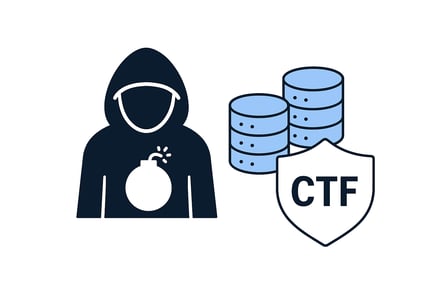Counter-Terrorist Financing (CTF) – the next frontier in financial compliance
Counter-Terrorist Financing (CTF) is one of the most complex areas of financial compliance. It focuses on identifying and stopping the movement of funds that support terrorist activity — whether through direct transfers, informal remittance networks, or legitimate commercial fronts.
While money laundering aims to disguise the origin of illicit funds, terrorist financing often works in reverse. Funds may come from legal sources but are redirected for illegal purposes. This distinction makes CTF far more difficult to detect using traditional anti-money laundering (AML) techniques.
The global framework for CTF
The foundation of international CTF efforts comes from the Financial Action Task Force (FATF), particularly Recommendations 5–8, which set out obligations for identifying, reporting, and disrupting terrorist financing.
Key components include:
- Prohibiting financial support to individuals or organizations designated as terrorists or terrorist groups.
- Freezing assets linked to such entities without delay.
- Implementing customer due diligence and enhanced monitoring for high-risk jurisdictions.
- Ensuring international cooperation between law enforcement, intelligence agencies, and Financial Intelligence Units (FIUs).
The FATF’s 2024 Mutual Evaluation Reports show that while many jurisdictions have improved CTF frameworks, enforcement remains inconsistent. Some financial institutions still fail to identify subtle links between legitimate accounts and extremist networks.
CTF in the context of AML and DORA
CTF sits alongside AML as part of a unified risk management approach. Both fall under the broader framework of financial crime prevention and operational resilience defined by EU regulation.
The EU’s Sixth Anti-Money Laundering Directive (AMLD6) explicitly lists terrorist financing as a predicate offense to money laundering. It also requires financial institutions to share intelligence with national FIUs and supervisory authorities.
The Digital Operational Resilience Act (DORA) complements this by ensuring that systems supporting AML and CTF compliance remain secure and resilient under operational stress. Fraud detection, risk scoring, and suspicious transaction reporting systems must now meet strict ICT resilience and data governance standards.
CTF, AML, and DORA are no longer separate silos — they form an interlocking structure of financial defense.

Common challenges in detecting terrorist financing
Financial institutions face several challenges in implementing effective CTF programs:
- Low transaction amounts.
Terrorist operations often require modest funding, making detection difficult in a sea of small transactions. - Use of legitimate businesses.
Front companies, charities, and trade networks are frequently used to move or disguise funds. - Informal transfer systems.
Unregulated value transfer methods, such as hawala networks, bypass conventional financial channels entirely. - Crypto assets and digital payments.
The rise of pseudonymous transactions introduces new risks that traditional monitoring systems struggle to trace.
According to the Europol Terrorism Situation and Trend Report 2024, more than half of detected terrorism-related financial flows in the EU involved legitimate corporate entities or consumer payment platforms.
This underlines a core challenge: the line between lawful activity and terrorist financing is often blurred until intent becomes clear through network analysis.
Risk-based monitoring and data analysis
Modern CTF programs rely on multi-dimensional risk models rather than static rule sets. These models assess transactions across geography, counterparties, and behavioral factors to identify hidden risk.
Advanced systems can:
- Apply transaction risk scoring based on origin, frequency, and typology.
- Correlate payments with lists of sanctioned individuals or high-risk jurisdictions.
- Analyze social and business linkages to reveal indirect exposure.
- Flag cross-border activity inconsistent with a customer’s normal profile.
These techniques require integrating internal data with intelligence from FIUs, law enforcement, and intergovernmental databases. The challenge is doing so securely and in compliance with privacy laws such as GDPR.
The role of Financial Intelligence Units (FIUs) in CTF
FIUs remain the operational backbone of CTF enforcement. They collect Suspicious Activity Reports (SARs), identify trends, and share intelligence with domestic and international partners through the Egmont Group of FIUs.
However, the volume of reports continues to grow faster than FIUs can analyze them. Many lack access to cross-border datasets or privacy-safe collaboration tools that would allow faster intelligence generation.
The result is a persistent lag between suspicious activity detection and actionable intervention — a gap that technology now has the potential to close.
“Terrorist financing rarely stands out on a balance sheet. It hides in small transfers, legitimate invoices, and community donations. The only way to expose it is by connecting data across institutions — safely and intelligently.”
- Mark Medum Bundgaard, CPO, Partisia
This underscores the importance of cross-institutional collaboration. CTF effectiveness depends on secure, lawful data sharing between banks, regulators, and intelligence agencies.
Technology’s emerging role in CTF
New analytical methods are transforming how institutions approach terrorist financing risk.
- Machine learning models detect atypical transaction clusters.
- Natural language processing helps analyze payment narratives and communication data.
- Network analysis maps hidden relationships between accounts and entities.
Yet these methods require collaboration — and collaboration introduces data privacy risk. Sharing sensitive financial data, even for legitimate regulatory purposes, must comply with strict data protection rules.
This is where privacy-preserving computation is starting to change the equation.
Partisia’s solution
Preventing terrorist financing requires collaboration without compromise. Partisia’s privacy-preserving data collaboration platform enables financial institutions, regulators, and FIUs to work together on shared CTF analytics without exposing sensitive data.
Using Multi-Party Computation (MPC), multiple entities can jointly analyze transaction patterns, run typology models, and test detection rules — all while keeping the underlying data private.
This approach directly supports FATF and EU expectations for intelligence cooperation while meeting GDPR and DORA data protection standards. It allows financial institutions to strengthen detection capabilities without creating new data exposure risks.
As the financial sector faces mounting pressure to identify complex, cross-border terrorist financing networks, privacy-preserving computation is emerging as the most practical path forward for secure and compliant intelligence collaboration.

2025.11.16

